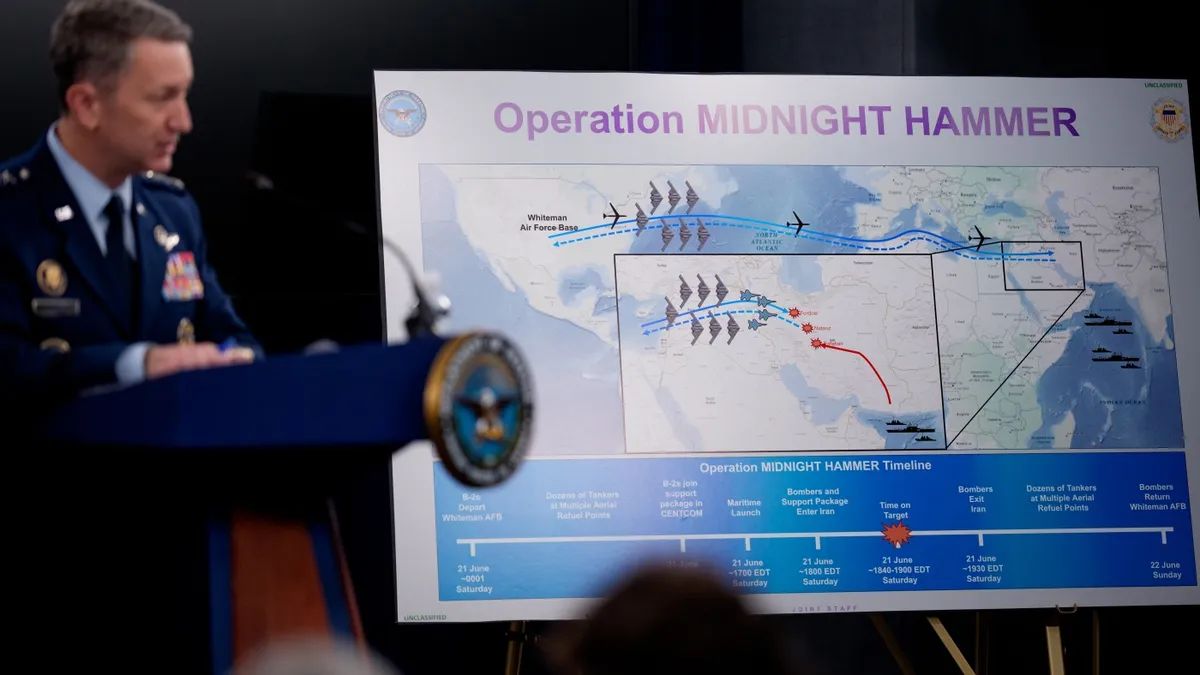
The framers of the U.S. Constitution operated in an era defined by muskets and messengers, where the pace of warfare was significantly slower. This environment allowed ample time for Congress and the president to engage in discussions before making critical decisions regarding military action. By granting Congress the power to declare war and designating the president as the Commander in Chief of the military, the Constitution set the stage for an enduring struggle over the authority to deploy U.S. forces.
President Trump’s recent decision to launch airstrikes on Iran's nuclear facilities without prior consultation with Congress has sparked intense criticism from lawmakers. Many argue that this action undermines their constitutional authority to declare war. Senator Mike Kelly, a Democrat from Arizona, voiced his concerns during an interview on NPR's Morning Edition. He emphasized that while Democrats may have limited avenues to compel the administration to seek congressional approval, it is vital for the president to maintain respect for constitutional norms. Kelly remarked, “The administration should comply with the Constitution. Traditionally, presidents have done that.”
Senator Tim Kaine, a Democrat from Virginia, took a firmer stance on this issue during his appearance on CBS' Face the Nation. He stated, “The United States should not be in an offensive war against Iran without a vote of Congress. The Constitution is completely clear on it. I am so disappointed that the president has acted so prematurely.”
To understand the controversy surrounding military action, it is essential to look at what the Constitution explicitly states regarding war powers. Article I grants Congress the authority to declare war, issue Letters of Marque and Reprisal, and establish regulations regarding captures on land and water. In contrast, Article II designates the president as the Commander in Chief of the Army and Navy, empowering the executive to direct military actions once a conflict has been authorized by Congress.
Rebecca Ingber, a law professor at Cardozo Law School in New York, asserts, “It’s pretty clear that the framers thought that any time we were going to be making the decision to go to war with another country, that was going to be a decision for Congress.” Despite this clear delineation, U.S. presidents have historically engaged military forces in combat without a formal declaration of war.
Historically, instances like the Quasi War, a limited naval conflict between the United States and France at the end of the 18th century, exemplify how presidents have operated without formal declarations of war. According to Stephen Griffin, a constitutional law professor at Tulane Law School, this trend accelerated after World War II, driven by advancements in military technology and evolving global institutions. “The creation of the atom bomb changed the game,” Griffin explains. In prior times, communication was slow, and military deployments took months; however, post-1945, the world required faster responses to threats.
The establishment of the United Nations in 1945 further complicated the legal landscape. The U.N. Charter restricts the use of force by member states except in self-defense or with Security Council approval, shifting legal discussions from formal declarations of war to broader concepts like the use of force.
Griffin points out that the Constitution does not mandate a formal declaration of war; instead, what is crucial is legislative approval, which can come in the form of an Authorization for the Use of Military Force (AUMF). For instance, while the Korean War lacked a formal declaration, the Gulf of Tonkin Resolution of 1964 allowed President Lyndon Johnson to escalate military action in Southeast Asia. Similarly, President George H.W. Bush received an AUMF for the Persian Gulf War in 1991, and President Bill Clinton engaged in military operations during the Kosovo crisis without congressional authorization.
In response to the conflicts and the Vietnam War's fallout, Congress enacted the War Powers Resolution of 1973, aiming to restore the balance of authority between Congress and the president. This resolution requires the president to notify Congress within 48 hours of deploying U.S. forces into hostilities and mandates that military action must cease within 60 days unless Congress authorizes an extension. It became law after Congress overrode President Nixon’s veto.
Michael Glennon, a professor at the Fletcher School of Law and Diplomacy, notes that the Vietnam War was a turning point for Congress as public outcry grew over the loss of life. Although there was initial optimism that the War Powers Resolution would rectify the imbalance in authority, Glennon observes that presidents from both parties have largely ignored its provisions, often informing Congress rather than genuinely consulting them.
Glennon argues that the Constitution prohibits the president from using armed force against a country like Iran unless there is an attack on the United States or an imminent threat. He concludes that the recent airstrikes were unconstitutional. Despite this, he acknowledges that the requirement under the War Powers Resolution to consult Congress has been met in some cases, albeit often through mere notification rather than consultation.
Ingber supports this perspective, noting that even the current administration is making efforts to follow the War Powers Resolution. Secretary of Defense Pete Hegseth stated that the administration is acting “in accordance with the War Powers Resolution.” However, the ongoing respect for these requirements raises questions about their actual implementation and effectiveness.
If the airstrikes on Iran are indeed a one-time event, Griffin suggests that congressional authorization may not be necessary. However, he warns that if this situation escalates into ongoing conflict with Iran, then President Trump should seek authorization. This would not only comply with the War Powers Resolution but also solidify his legal standing regarding military actions.